Wearable Technology and the Analytics for Your Performance

Wearable technologies, known mostly as “wearable tech,” are electronic devices that are physically worn by individuals in order to track, analyze and transmit personal data. These smart devices can track biometric data from heart rate to sleep patterns, and are also becoming popular tools to optimize your health. Wearable devices have exploded over the past decade and will have a projected market value of just under $52 billion dollars by 2022
Having all of this health data in real-time is, of course, helping not just sports and fitness industries push the boundaries of training but also for high performers who want to optimize their productivity and performance. Professional athletes from all over the world maximize their training regimes thanks to the biometric data captured through wearable technology and now the mainstream is catching on.
What can you learn from these data points?
For example, VO2 Max is an abbreviation for the maximum volume of O2 (oxygen), which is transferred to the blood. As this level changes and increases as you start exercising, VO2 Max is the level at which the amount of oxygen you process hits its maximum and plateaus. VO2 Max is measured in millilitres of oxygen processed per kilogram of body weight every minute. The better your aerobic fitness, the more oxygen you can pass into your body – so this is the best metric out there to check your performance.
White paper on VO2Max by Firstbeat
There are even new ways to optimize sleep and light exposure that can reduce jet lag and improve alertness. Wearable technology can be used to calculate optimal personalized sleep and light schedules.
Are there studies on the effectiveness of wearable tech?
The insights from medical class sensors in consumer wearable products are already saving lives. The FDA-approved electrocardiogram (ECG) in the Apple Watch can detect signs of A-Fib, while it’ll also check for an irregular heartbeat at regular intervals. The fall detection tool can alert the emergency services/contacts if you take a tumble. And, a recent study funded by Apple Inc. suggested that Apple Watches in particular could help identify heart rate irregularities and risk factors for stroke in their users.
What data metrics are collected on these devices?
Following is a list of some, but not all, of the data metric points that can be collected by wearable tech:
Activity Tracking
- Steps
- All day stress
- Sleep (Deep, REM, light)
- Resting Heart Rate
- Calories
- Intensity Minutes
Running
- Pace, Distance, Time
- VO2 Max estimate
- Recovery Advisor
- Race Predictor
- Stress Score
- Heart Rate Zones
- Lactate Threshold
- Vertical Oscillation
- Vertial Ratio
- Ground Contact Time and Balance
- Stride Length
- Performance Condition
- Cadence
Cycling
- Speed, Distance, Time, Laps
- Cadence
- Power/Total Power in watts
- Training Stress Score
- Normalized Power
- Intensity Factor
- Torque effectiveness
- Pedal smoothness
Golf
- Putts per round, Greens and Fairways Hit
- SwingTempo
- Swing Speed
- Club Path
- Face to Target
- Shaft Angle/Lean
Who are some of the wearable tech companies?
APPLE WATCH
What it does: In addition to many other uses and applications, Apple Watch has a variety of health tracking features that include heart rate notifications about irregular rhythms and heart rates that are too high or too low. The watch even has an electrocardiogram (ECG) app and auto-enabled fall detection for users over 65.
GARMIN
What it does: Garmin makes a wide range of devices, including fitness and health tracking wearables for adults and children. (Outdoor recreation, Automotive, Marine, Aviation) Garmin also offers an all day activity tracker that counts steps, distance, intensity and calories, helping users maintain health and fitness goals.
FITBIT
What it does: Fitbit does more than track steps, it also provides an entire health coaching platform that offers solutions for corporate wellness, healthcare systems and researchers. Fitbit’s wearable devices track a variety of health factors, from heart rate and sleep to female health and workout paces.

